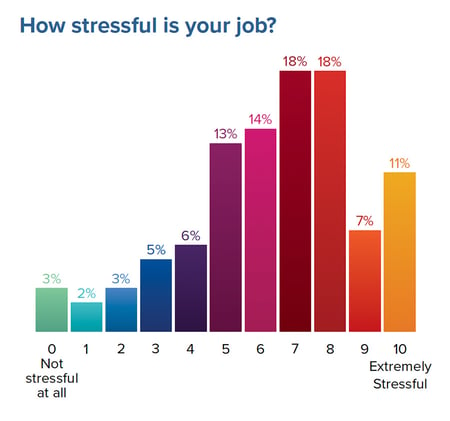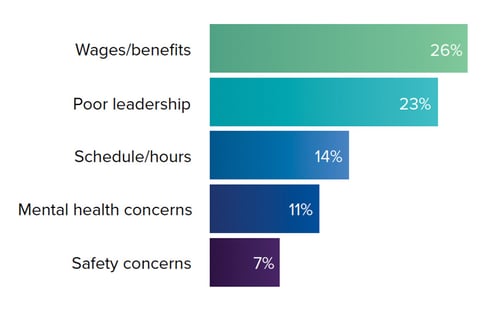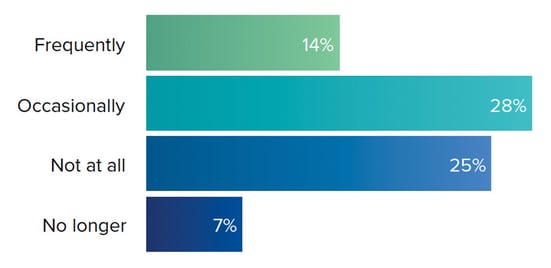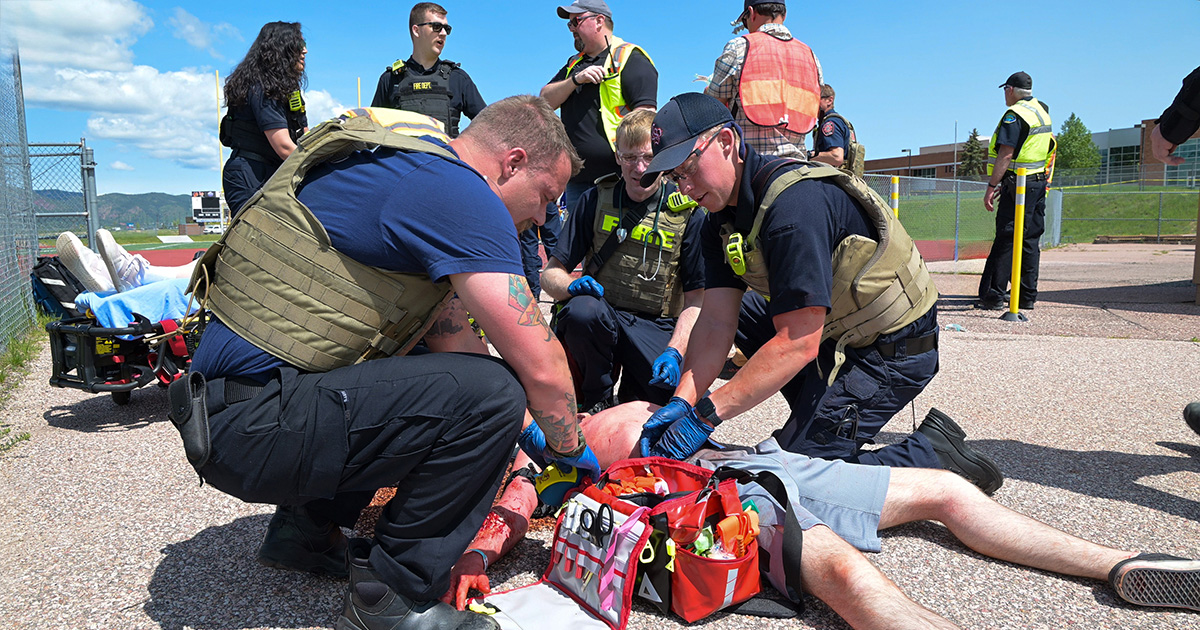In the News: Pulsara's Impact From Preparedness to Lifesaving Care
At Pulsara, it's our privilege to help serve the people who serve people, and we're always excited to see what they're up to. From large-scale...
5 min read
 Team Pulsara
:
Nov 08, 2023
Team Pulsara
:
Nov 08, 2023

Editor's Note: On July 21st, 2023, EMS1, Fitch & Associates, and the National EMS Management Association released their annual EMS Trend Report, proudly sponsored by Pulsara. Because the articles and advice found within contain such critical subject matter, we've elected to publish each segment one at a time here on our blog. Read, enjoy, share, and take to heart the following information brought to you by the most prestigious thought leaders in EMS. Today's entry is written by Chris Cebollero, nationally recognized EMS leader, advocate, best-selling author, and president/CEO for Cebollero & Associates.
Let me share a secret: EMS can be a very stressful job. I know what you are thinking: “no joke, Sherlock” (or perhaps a more colorful version). But, if we as leaders know that EMS is a stressful career field, what are we doing as leaders to help our workforce decrease their stress levels?
The EMS Trend Survey identified several factors that compound stress for our workforce. It’s not just the trauma, death, and horrors they experience every day, but also the short staffing, equipment challenges, late calls, and schedules that pile on for them.
Of course, we know that some level of stress is inevitable and unavoidable. Heck, dealing with traffic every day was a horrible source of stress for me in the field. But we know that prolonged levels of intense stress will cause long-term mental and physical challenges for employees. Finding ways to mitigate stress for our workforce must be foremost in our focus as leaders.

Individuals are often promoted to a leadership role because of their commitment to personal success and performance. As this transition occurs, there is less individual work and more focus on work through other people. Too often, no one is teaching the newly promoted supervisor how to go from working on tasks to dealing with priorities. This lack of leadership training now adds to the providers’ stress, as the new leader is trying to navigate different responsibilities.
Our workforce is the only resource inside an organization that will increase in value, and we must grow their knowledge, skills, and abilities. As a career field, we must draw a line in the sand that outlines how best to train new leaders in understanding the art and science of leadership, and, more importantly, how to recognize and not add to the stress of the workforce.
Are you really saying that my leadership style, or lack thereof, is adding to my workforce’s stress? Well, yes, I am, as a matter of fact. One of the biggest mistakes I made as a new leader was allowing my emotions to dictate my actions. When my stress level began to rise, my fuse got shorter and shorter. This added stress to my providers, who never knew when that fuse would blow. We need to remember that our workforce is counting on us to be role models and mentors, not parents or correctional officers.

Leaders must have the intuition to be able to recognize the stress of their workforce. Stress is something that will build and build, like a teapot boiling and ready to scream. Recognizing when an employee is beginning to have challenges is where leaders need to intercede. You must be able to understand when there is a shift in behavior, mood, and work performance, and begin the process of getting to the catalyst. Let’s look at some warning signs of stress:
An important component in recognizing stress is knowing who your employees are, understanding their personalities, their personal vision, and what inspires and motivates them. When you develop a professional rapport with your employees, when they are not on their game, you are cued in that there may be an issue. Strong active listening skills are paramount to getting to the bottom of the issue.

The “if you cannot stand the heat, get out of the kitchen” mentality has got to go. We must be diligent about helping our workforce have positive mental wellness, and not make them feel if they speak up, they will be ridiculed or ostracized. This is a horrible culture and one that needs to be eradicated from our career field.
Though many respondents report their agency provides behavioral health support (58%), few have taken advantage of these programs (just 5-10% reported engaging with employee assistance programs, peer support, chaplains, counseling, etc.). Further, 28% of respondents reported they don’t trust their EAP for support, and 29% don’t believe their peer support team is well trained.
As a leader, you should ensure those providing these services are well-trained, and you should understand the process. Call and talk to your EAP providers before you need to refer an employee for care. It was easier for me to say to an employee that I was going to connect them with Julie at the EAP and then be able to discuss the process, than to say, “I don’t know how it works.” This gave the EAP a bit more credibility.
Some stress on the team is expected, but it is vital that leaders are managing that stress as best we can for our workforce and remembering that it’s not just the career field causing stress. We don’t always know what’s going on at home with finances, childcare, aging parents, relationships, or medical conditions. Then, when they come to work, we pile on with short staffing, poor equipment, or late calls.
Now add the lack of leadership training and failure to recognize an employee in distress, and we have a recipe for burnout. There is no greater responsibility as a leader then taking care of the members of our team. This is not just administratively or logistically, but also in ensuring the highest level of mental wellness as well. As leaders, we need to be able to know our employees, what motivates them, why they are doing this job, and how best to keep them on the path for their success. Having this knowledge will guide us when they are tipping the wrong way and allow us to intercede before a catastrophe happens.
1. Survey your workforce and address their top concerns. 2023 EMS trend survey respondents are planning to leave their current employers because of:

2. Implement formal leadership training. Respondents listed poor leadership as the No. 1 most stressful aspect of their job, with their direct supervisor as No. 2., above salary, scene safety, bullying, and managing emotional trauma. Respondents reported their departments utilize internal leadership training:

3. Get to know your providers. The more you know your people, the more you can identify stress symptoms and know when to intervene. Having a relationship with your providers also helps to eliminate the stigma when someone does need behavioral health support. Though respondents reported high stress levels in stark numbers, 12% reported they haven’t participated in any work-provided services to reduce their stress, and another 12% preferred not to answer. Just 7% accessed their EAP, 8% accessed peer support, and 10% spoke with a chaplain or attended individual counseling.
4. Get familiar with your wellness programs. Ensure your wellness programs and personnel are well trained and that you know how the programs work, and that providers know how to access them.
Download the full 2023 EMS Trend Report
About the Author
Chris Cebollero is a nationally recognized EMS leader, advocate, and best-selling author. He is a member of the Forbes Coaching Council and an experienced speaker, coach, and mentor. He is the president/CEO of Cebollero & Associates, a medical consulting firm, assisting organizations in meeting the challenges of tomorrow.

At Pulsara, it's our privilege to help serve the people who serve people, and we're always excited to see what they're up to. From large-scale...

December Recap After an incredibly busy events year with 102 conferences, trade shows, and sponsorships, December was on the slower side for us, with...

Editor's Note: In July 2025, EMS1 and Fitch & Associates released their annual EMS trend survey, What Paramedics Want, proudly sponsored by Pulsara....